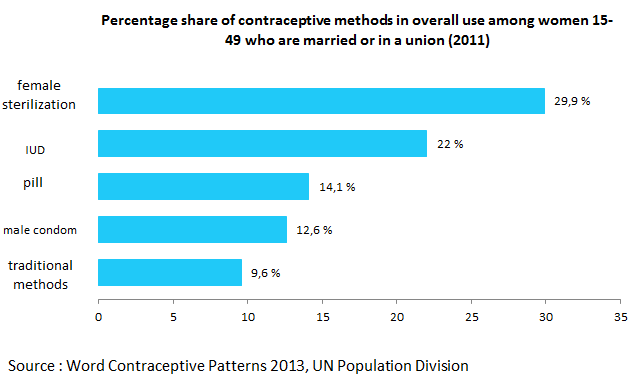Contraception across the world (2011)
Around 63 per cent of couples worldwide use a contraceptive method.
In 2011, worldwide, 63 per cent of women of reproductive age who are married or in a union use a contraceptive method. The others do not need to use contraception, either because they want a child, because they are expecting one, or because they know that they are sterile. Yet in some regions of the world, sub-saharan Africa especially, access to contraception is difficult and only a minority of couples use birth control. Worldwide, an estimated 143 million married or in-union women do not use contraception although they want to stop or delay childbearing.
The most widespread method : sterilization
Nine contracepting couples in ten use modern contraceptive methods. The most widespread is female sterilization (nearly 30 per cent worldwide). The other most widely used methods are the intra-uterine device (22 per cent), the pill (14 per cent), condoms (12,6 per cent) and traditional methods like withdrawal (9,6 per cent).

Practices vary widely from one country to another
In developed regions, the most commonly used methods are the pill and the male condom. In developing regions, the female sterilization and the IUD are the most widely used methods. Female sterilization is common in the countries of Latin America, for example in Colombia. The IUD is widely used in Asia, especially in China.
Source: World Contraceptive Patterns 2013, Population Division, United Nations
Online: August 2014
Links for more info
-
Births & family size [Anmation]
-
The family game [Game]
-
Contraception in France [Data]
-
Fifty years of legal contraception in France:diffusion, medicalization, feminization [Publication]
-
Contraception in France : new context, new practices? [Publication]
-
Four decades of legalized contraception in France: an unfinished revolution? [Publication]
-
Birth prevention before the era of modern contraception [Publication]
